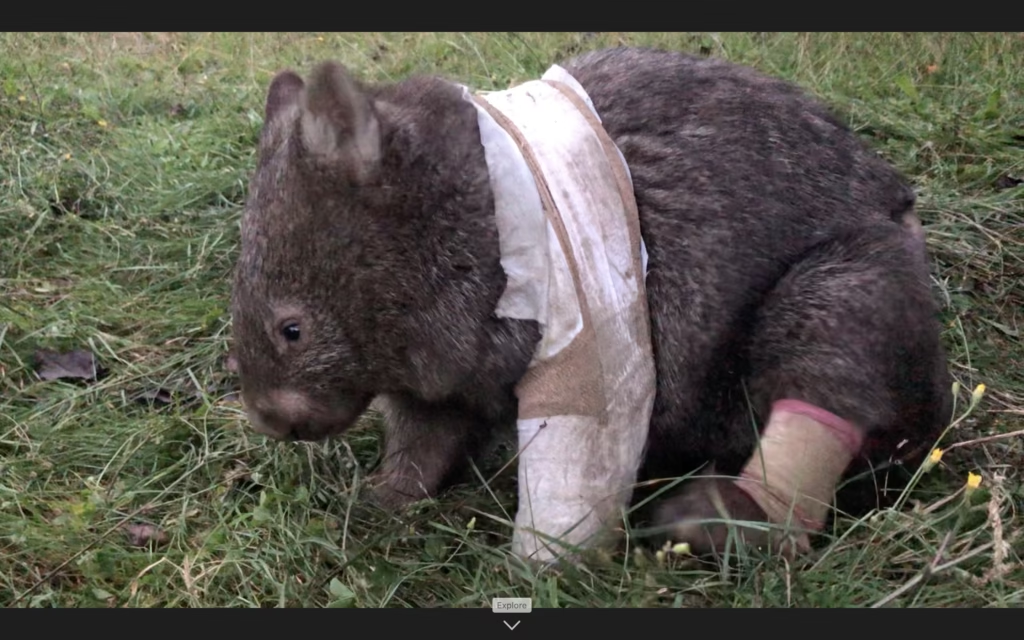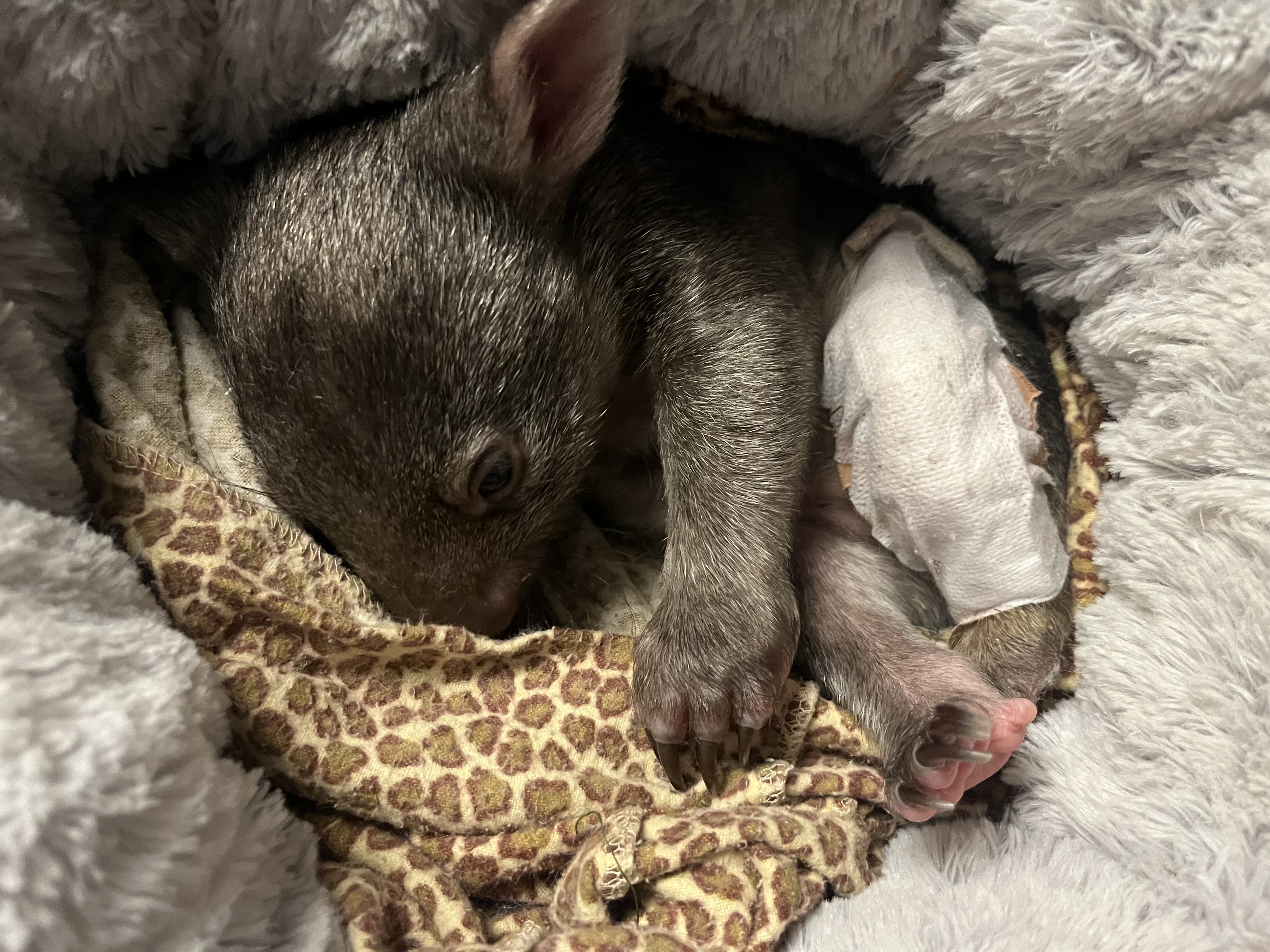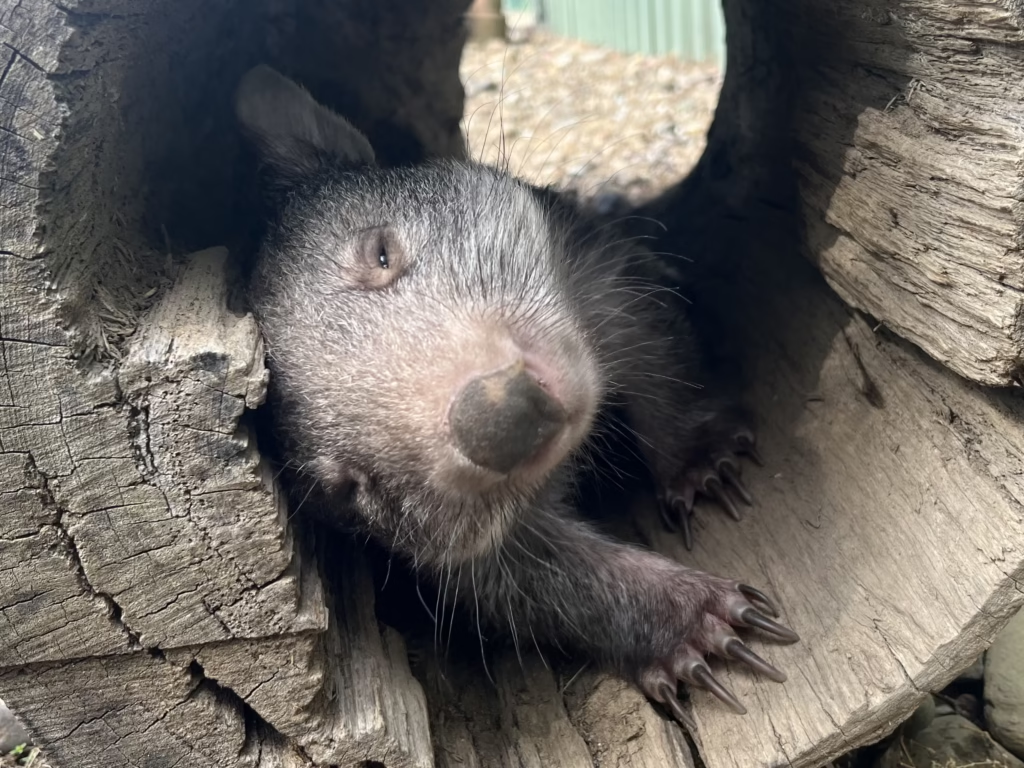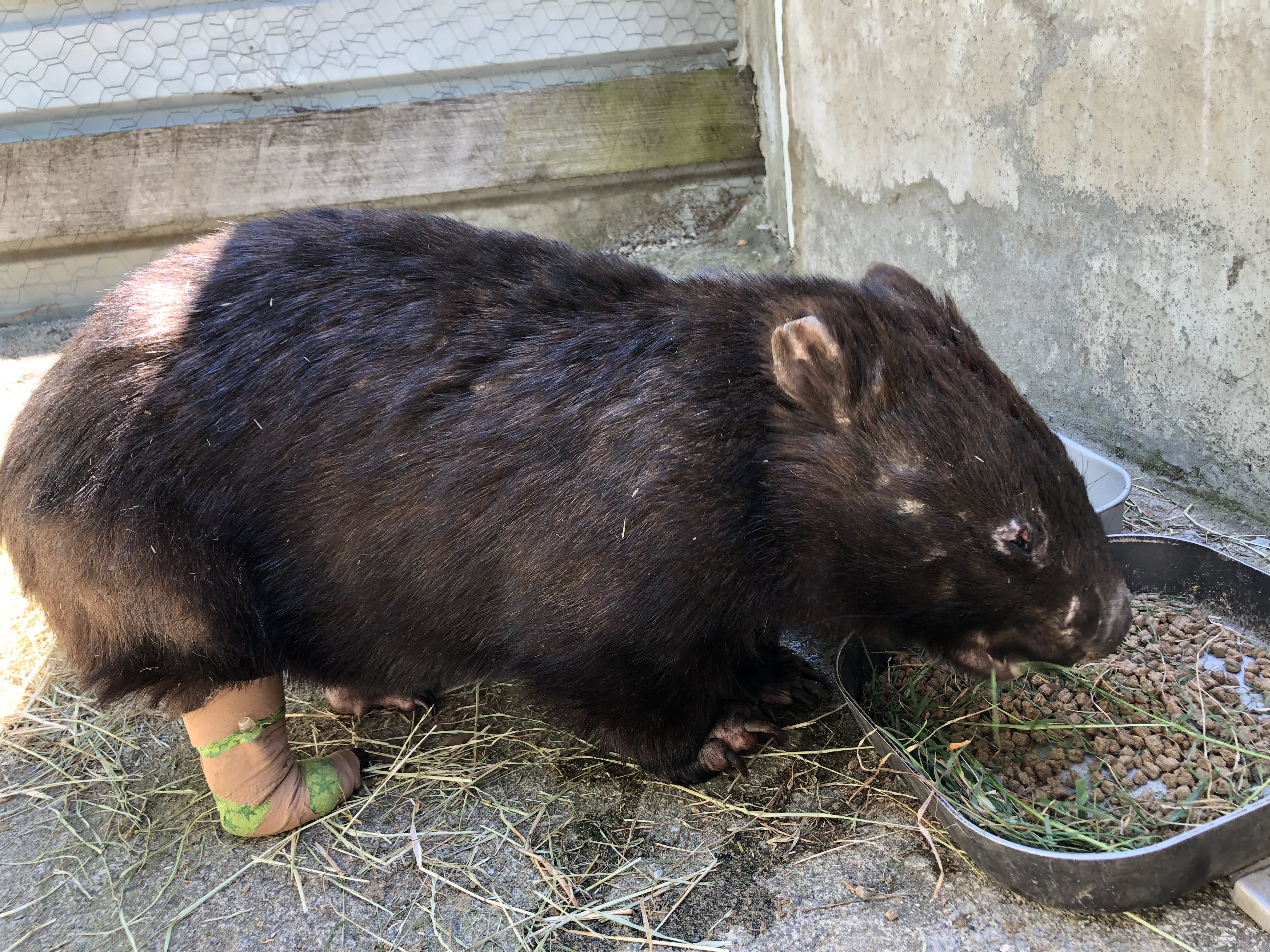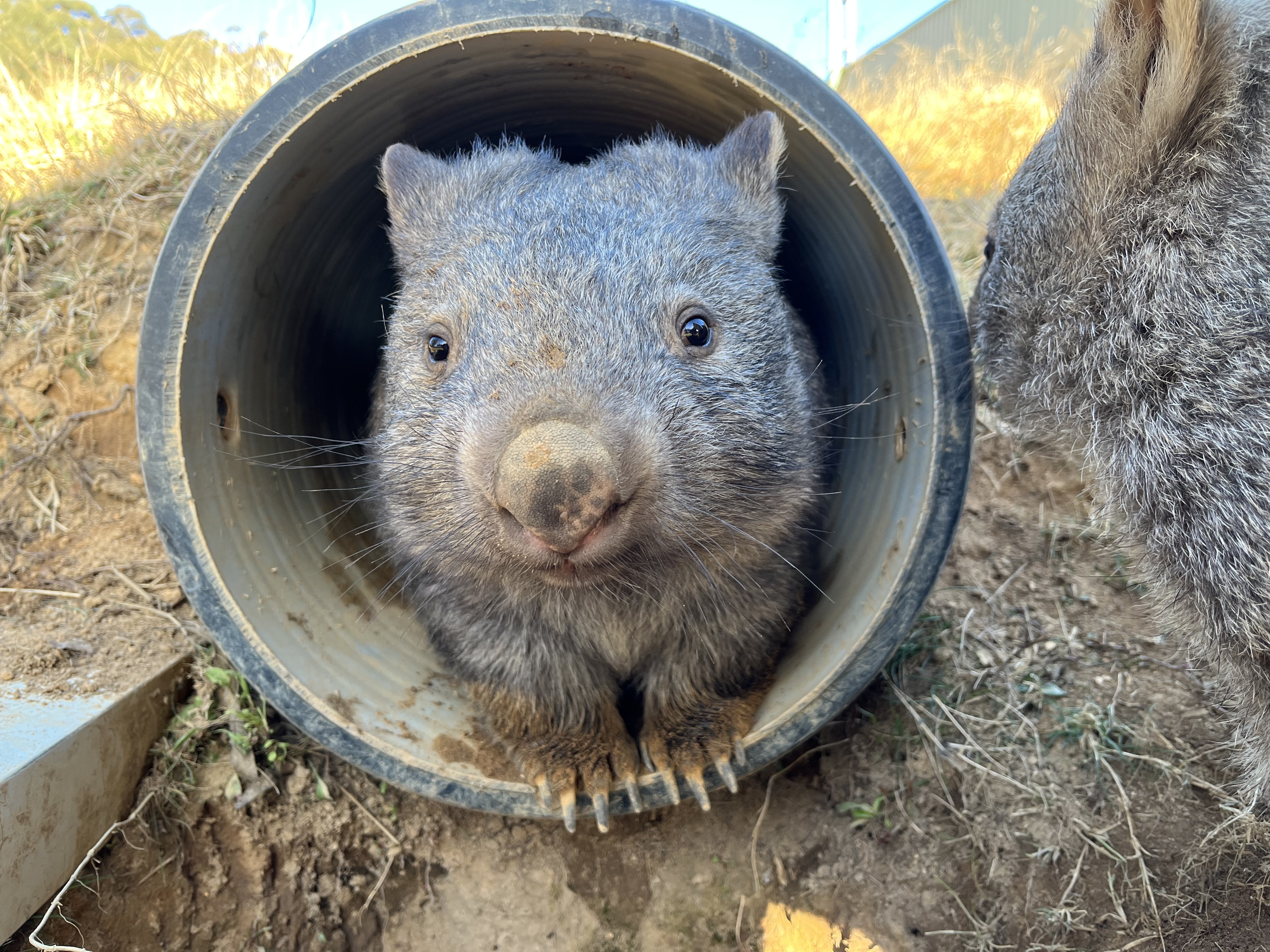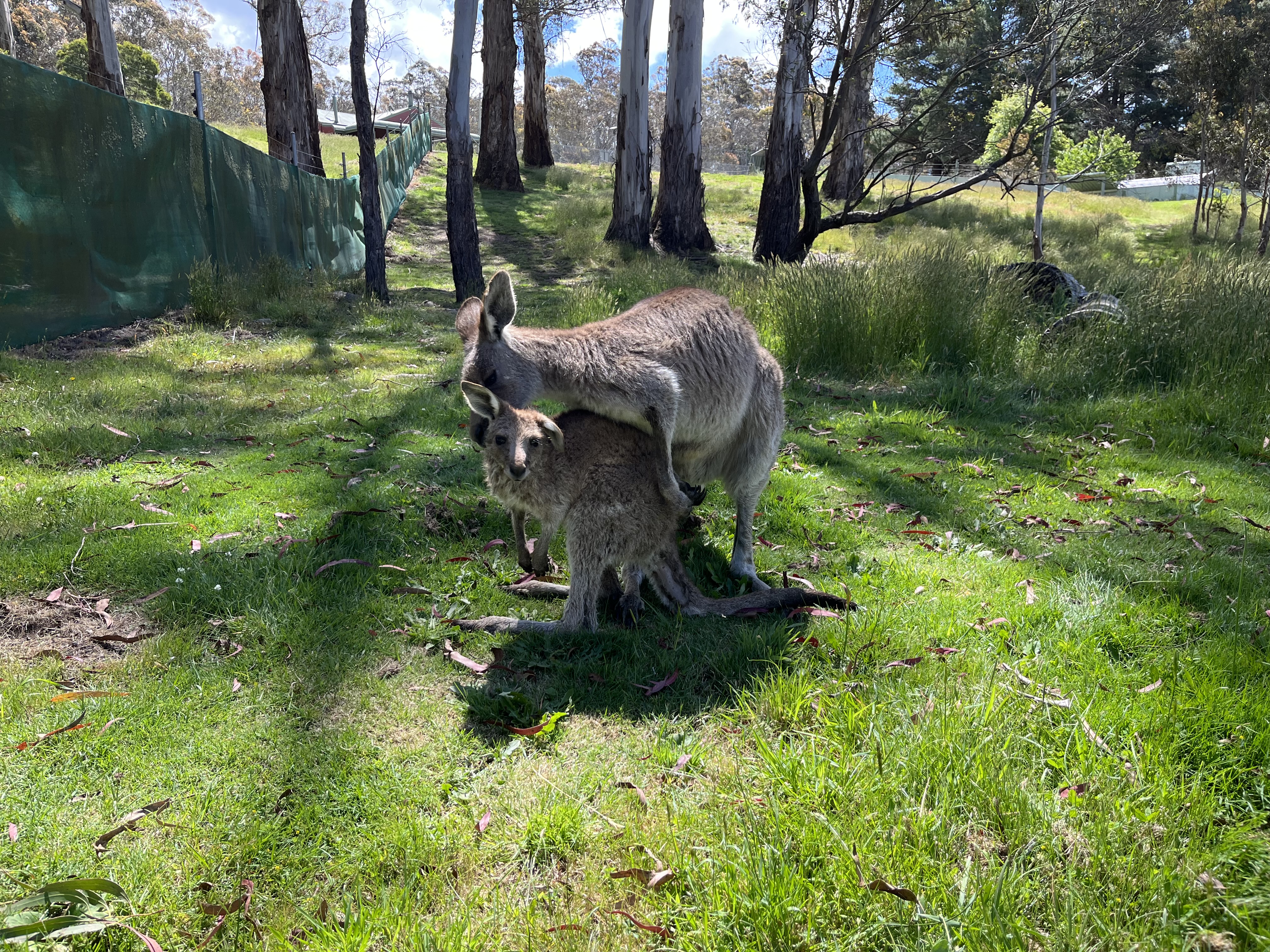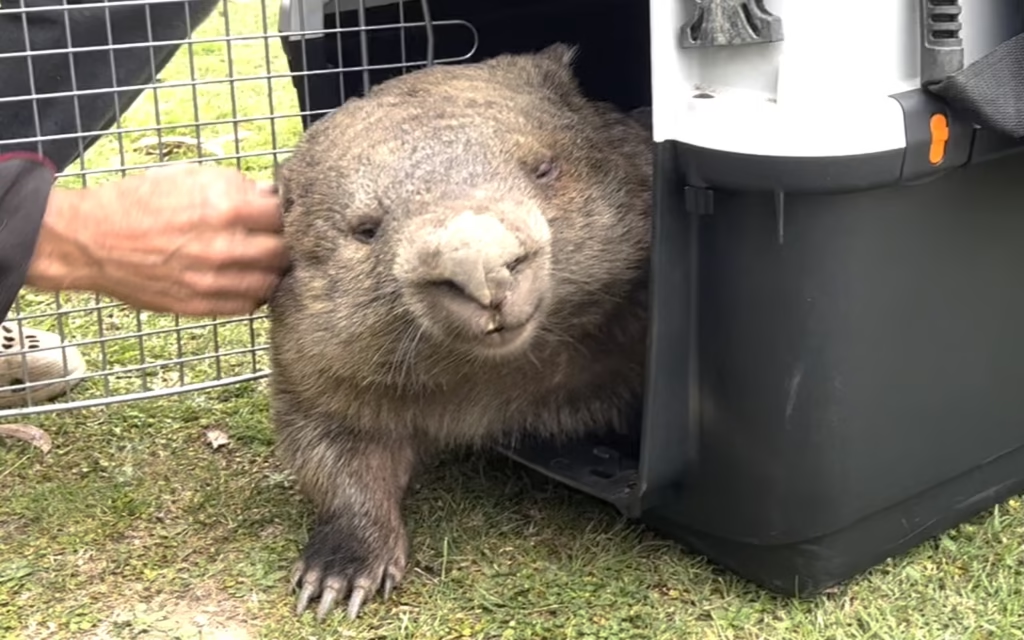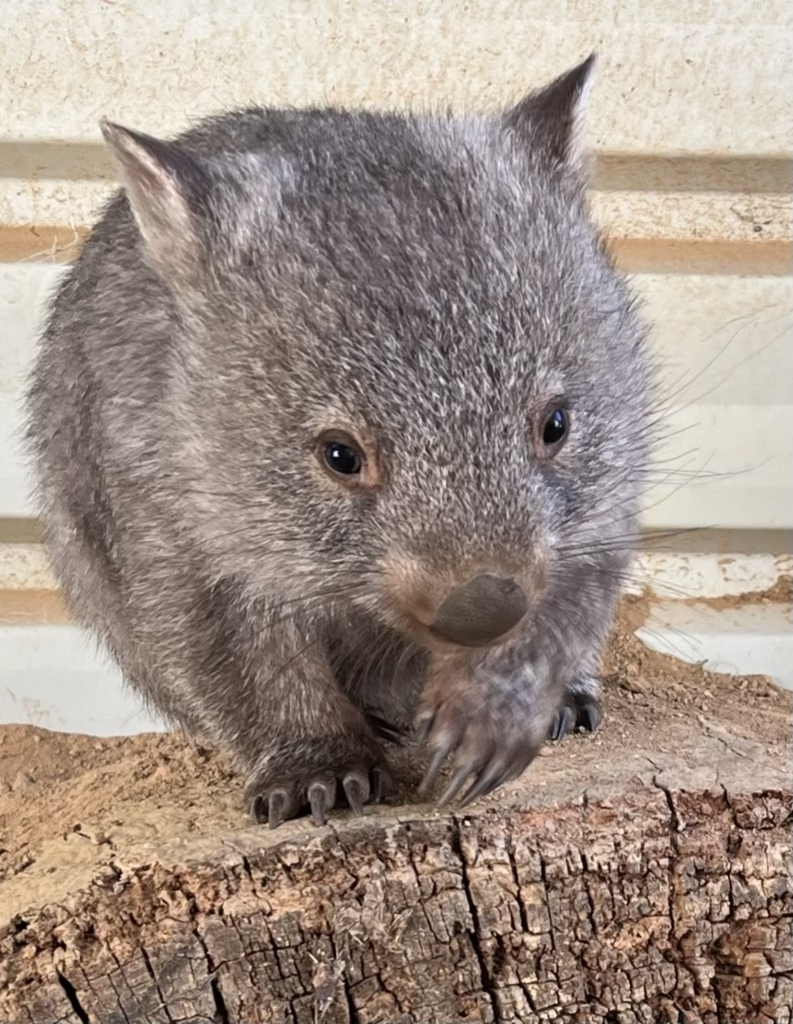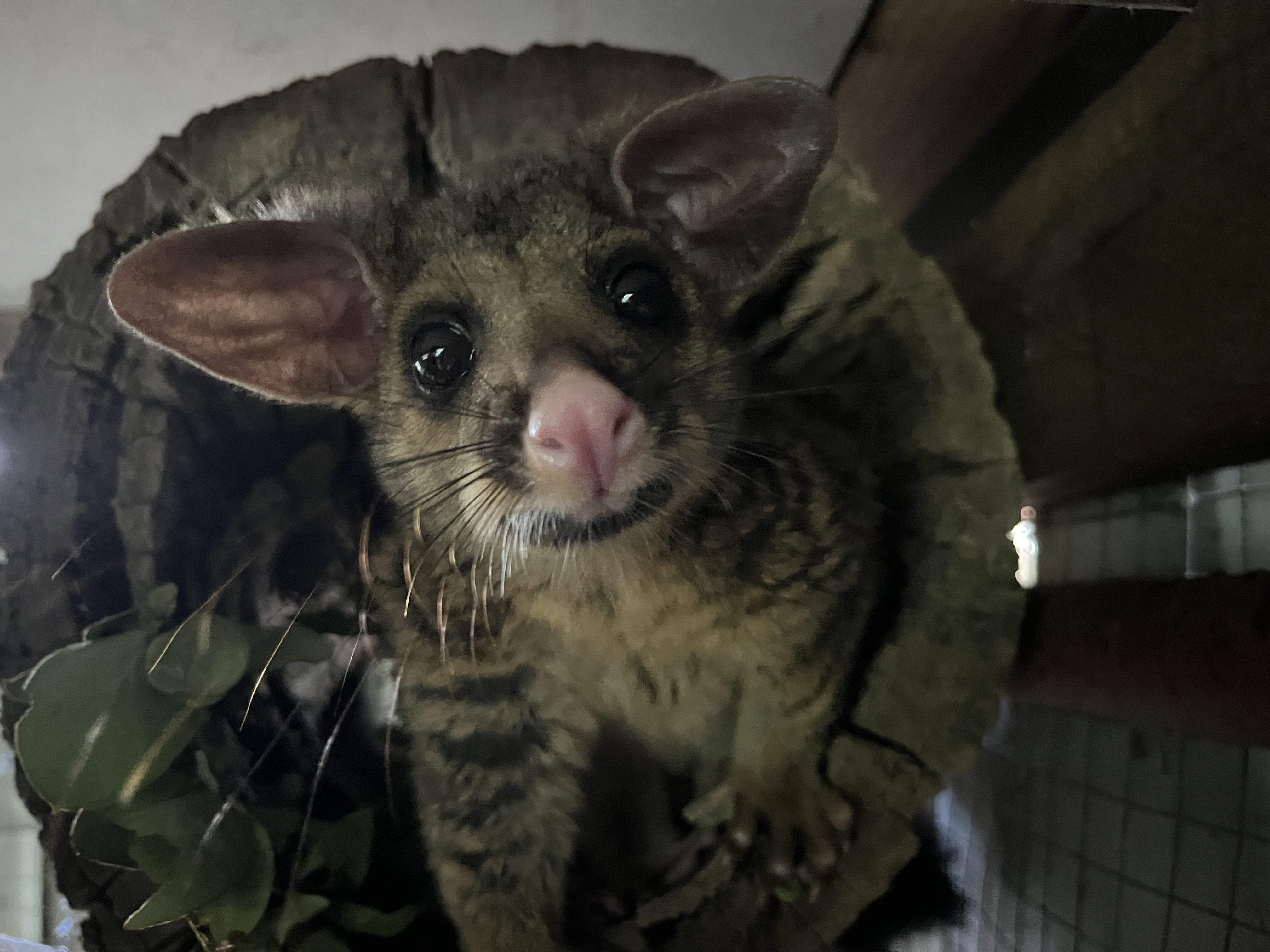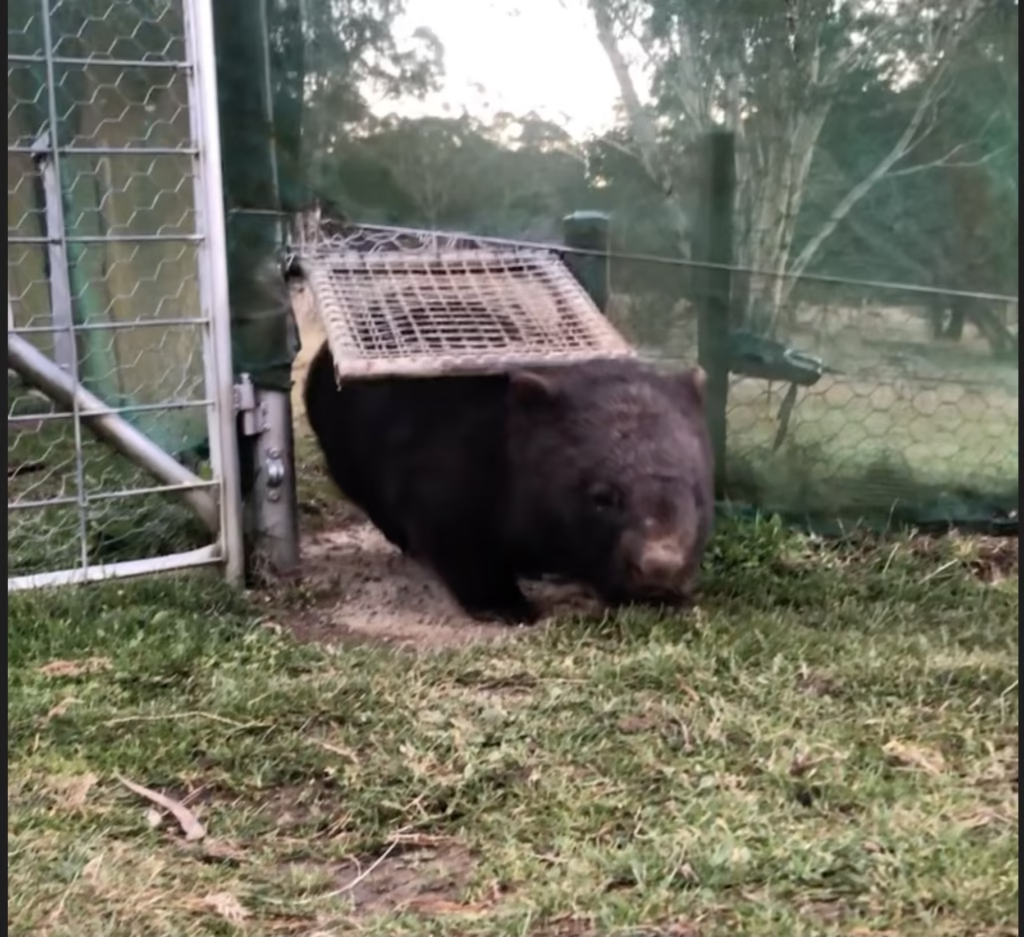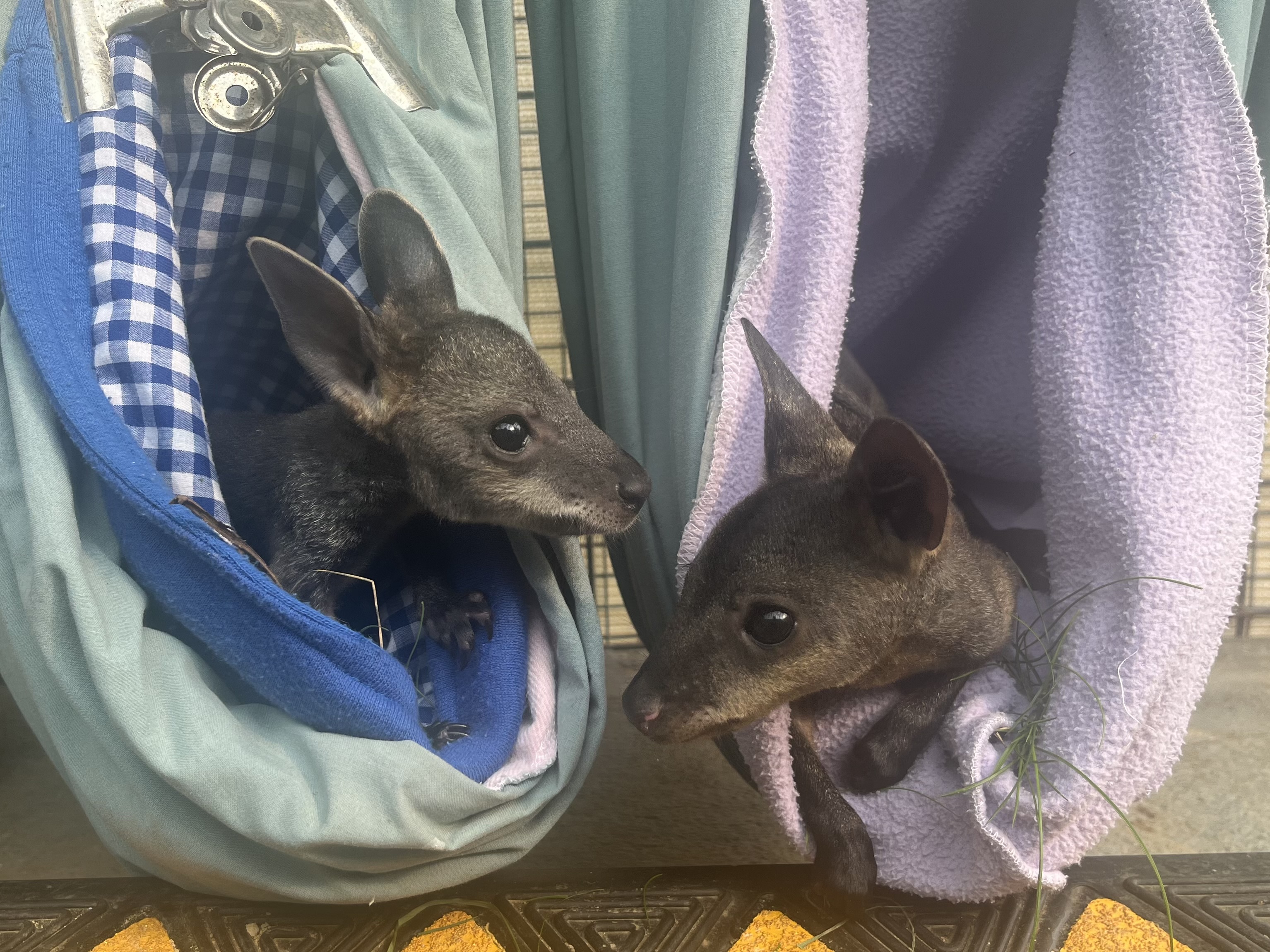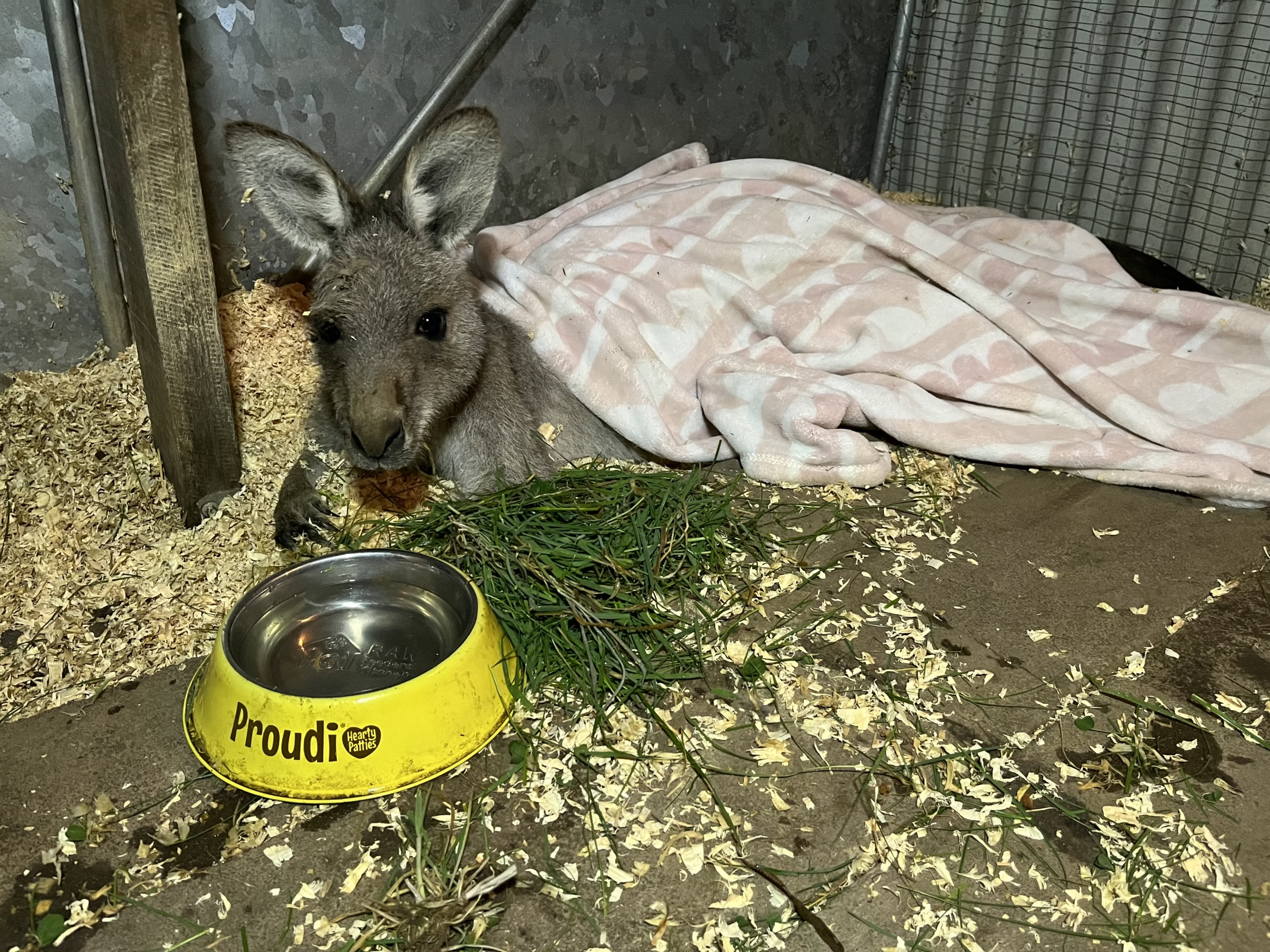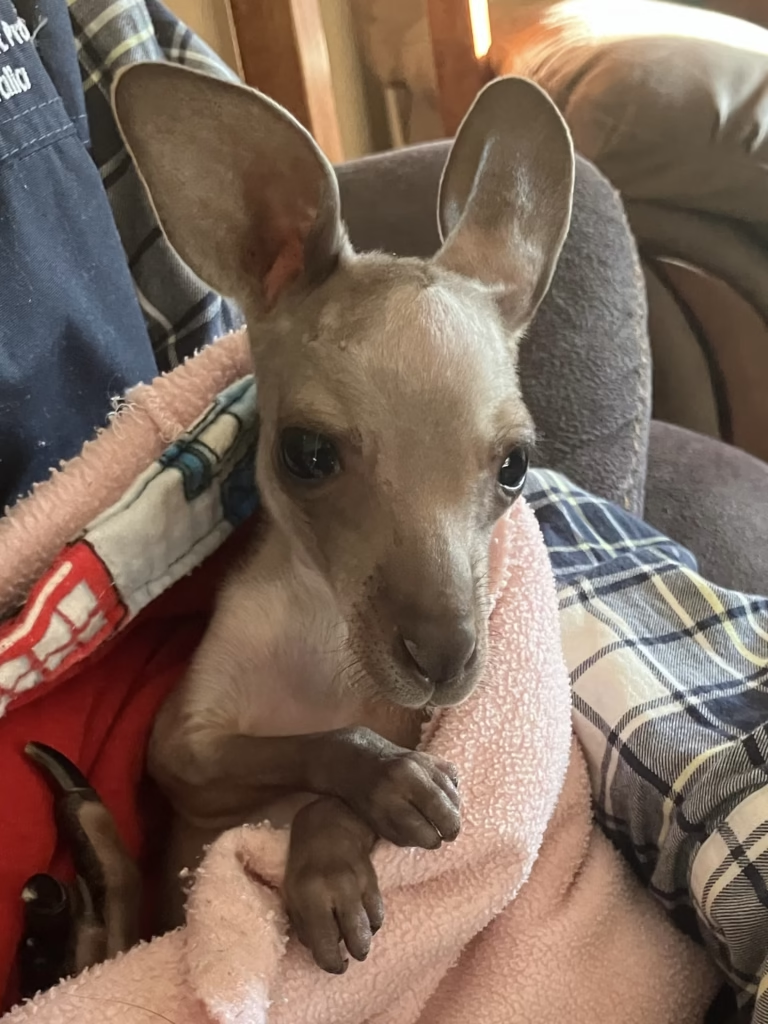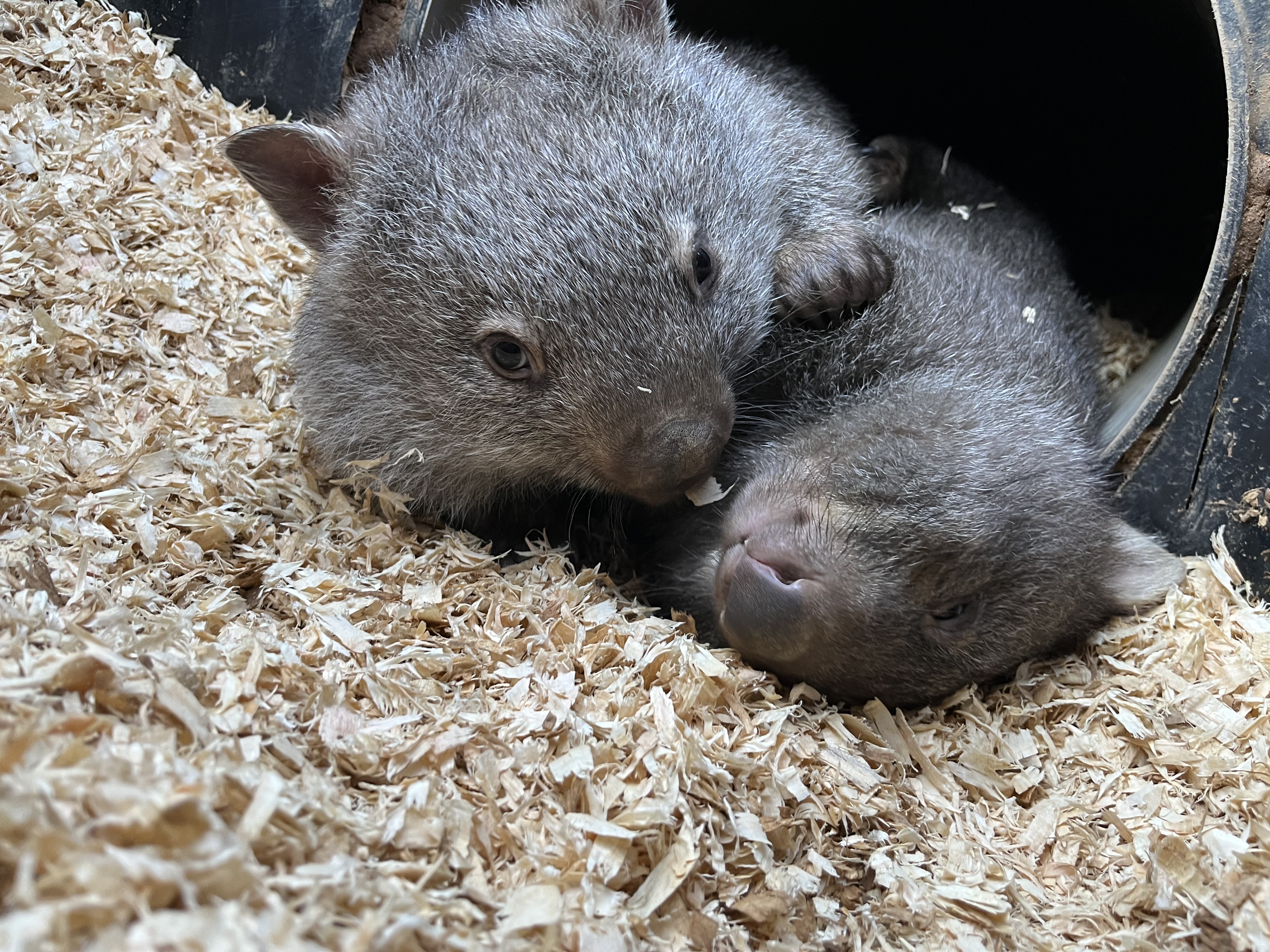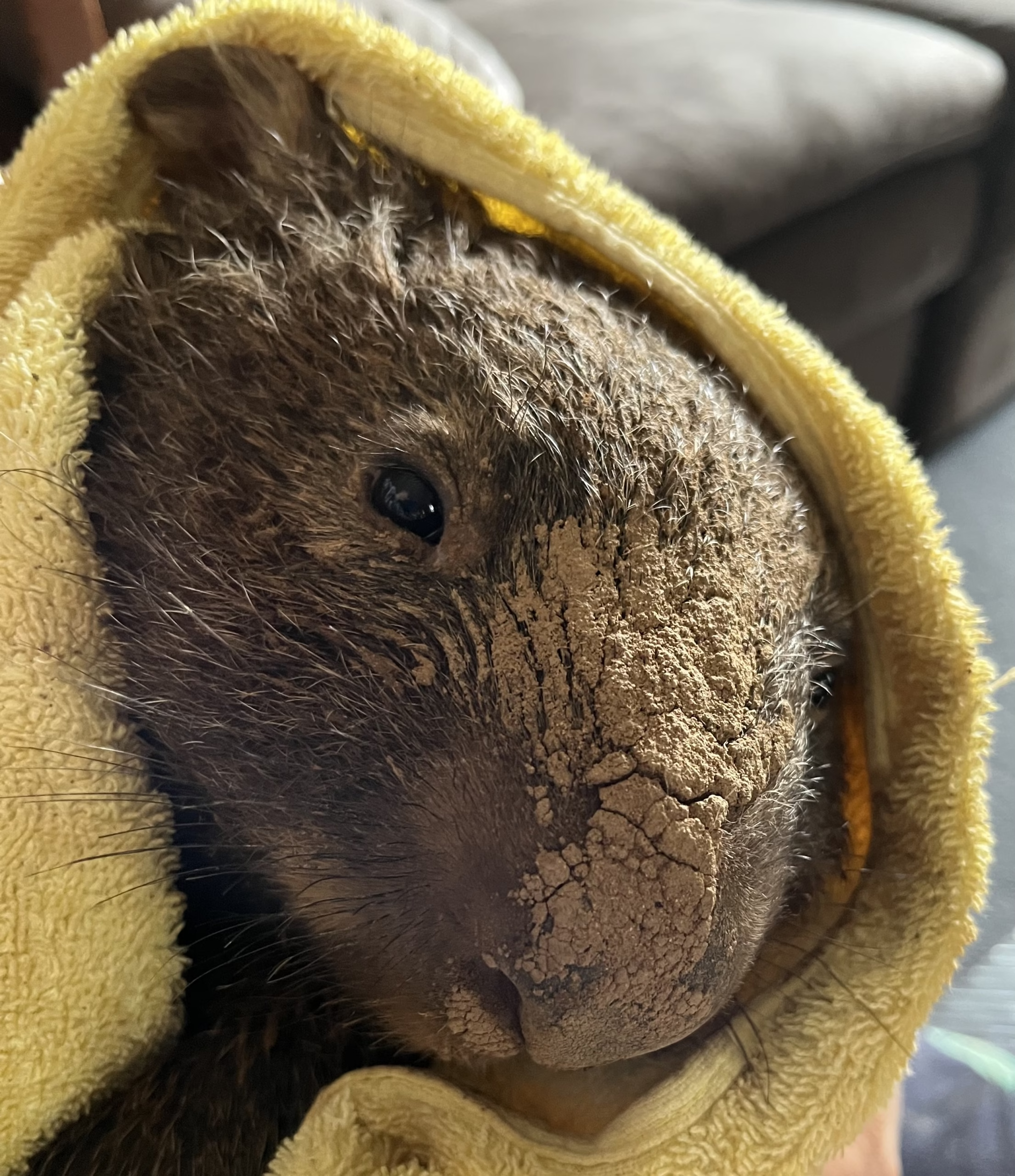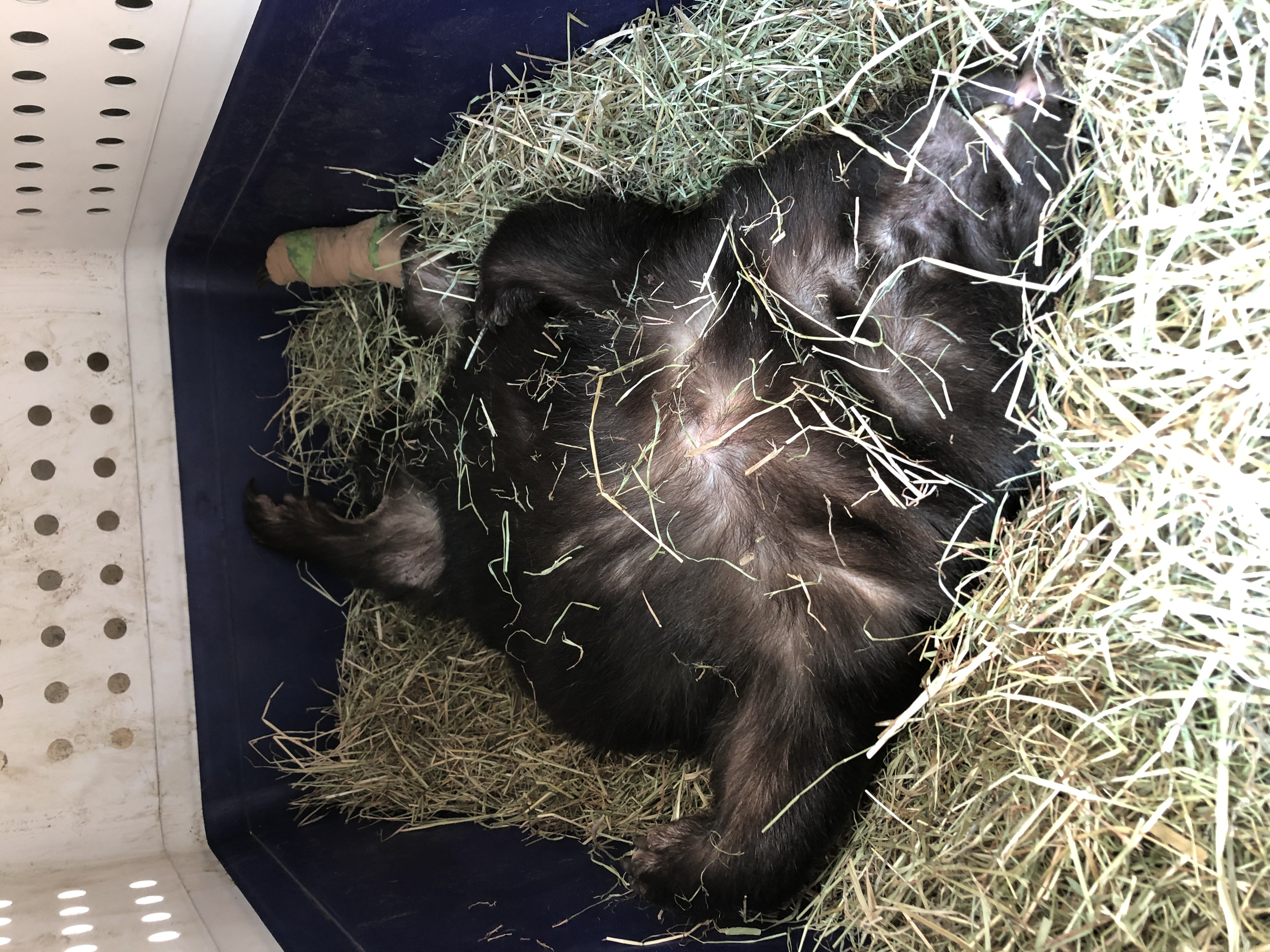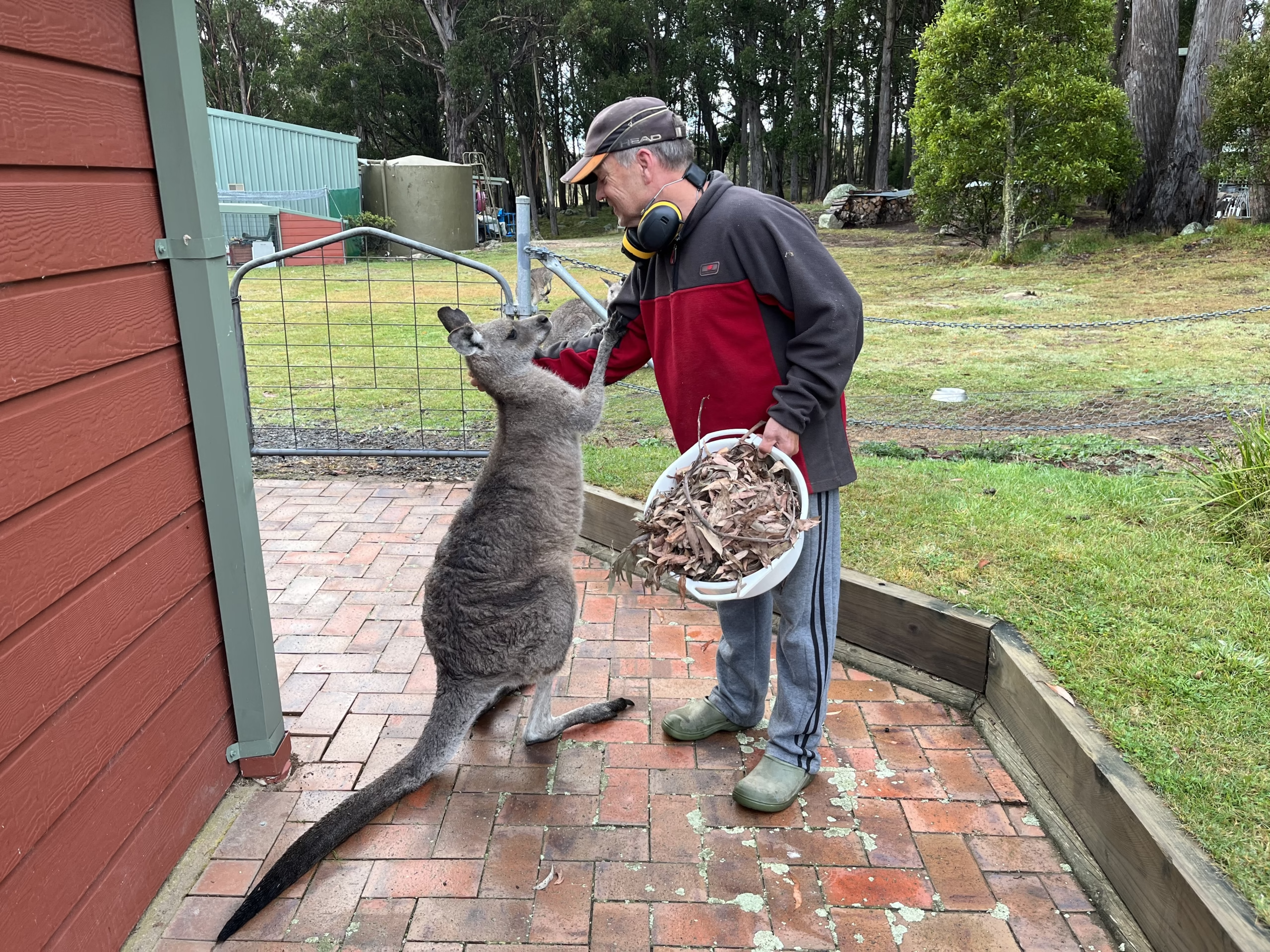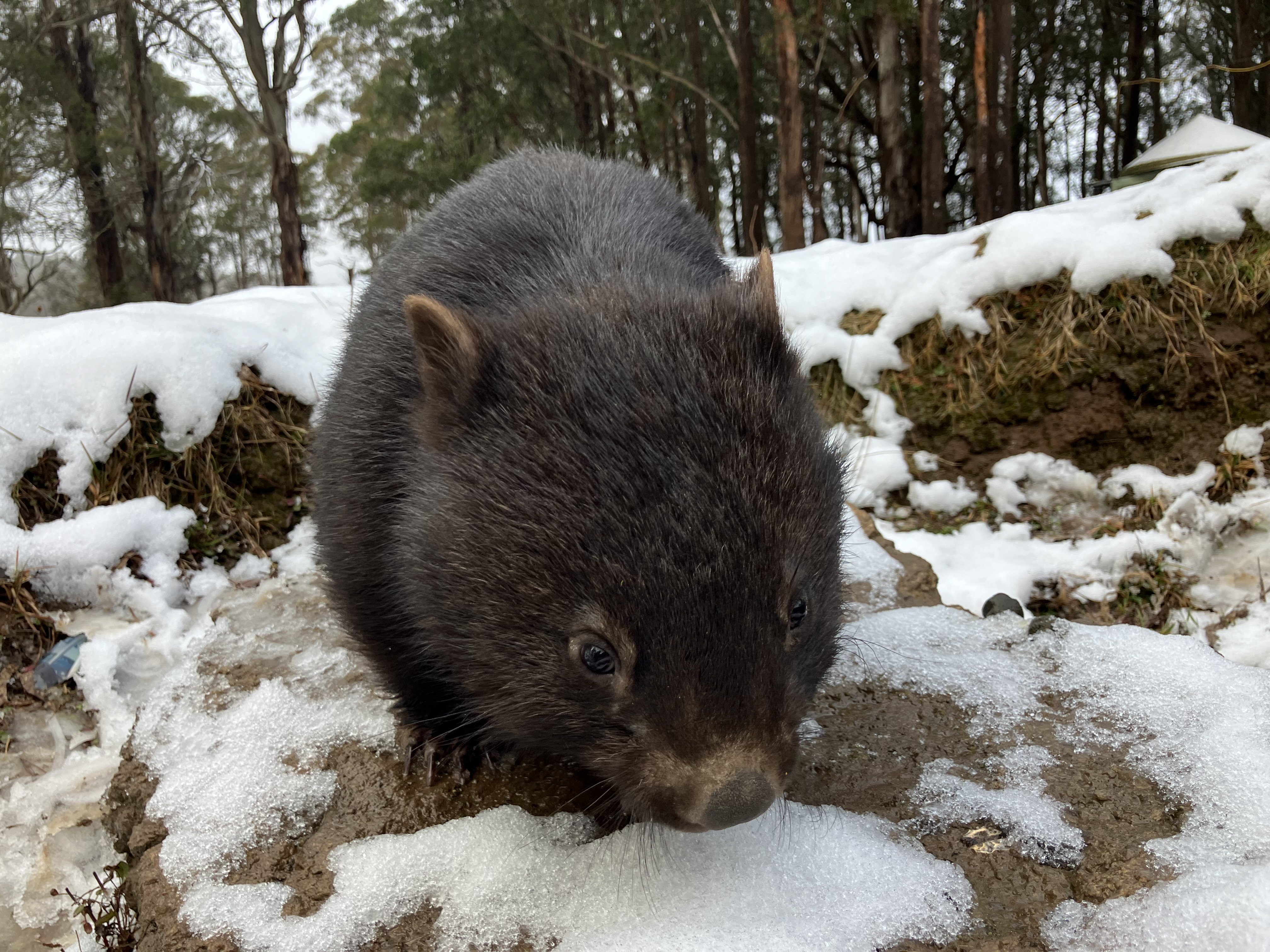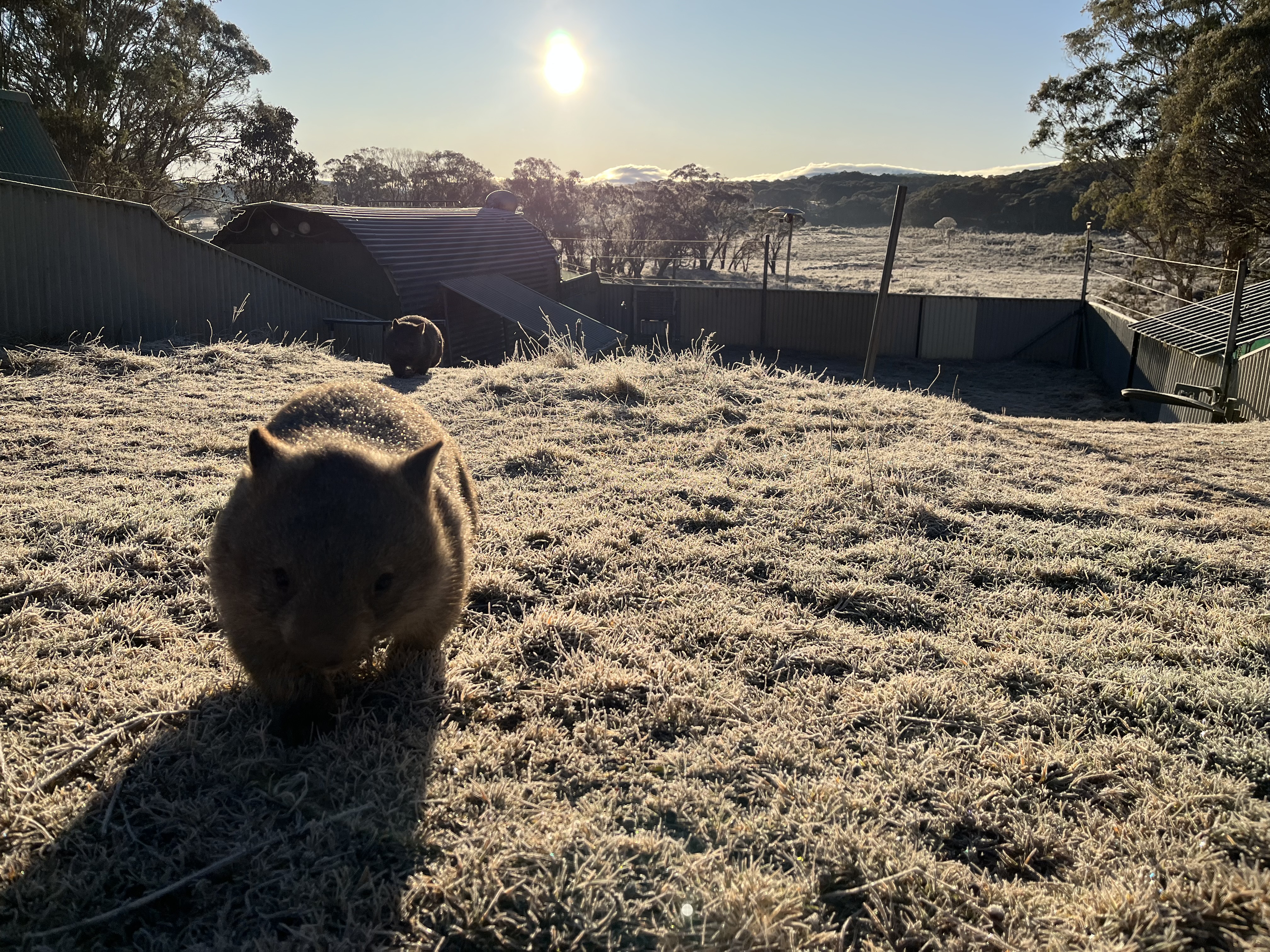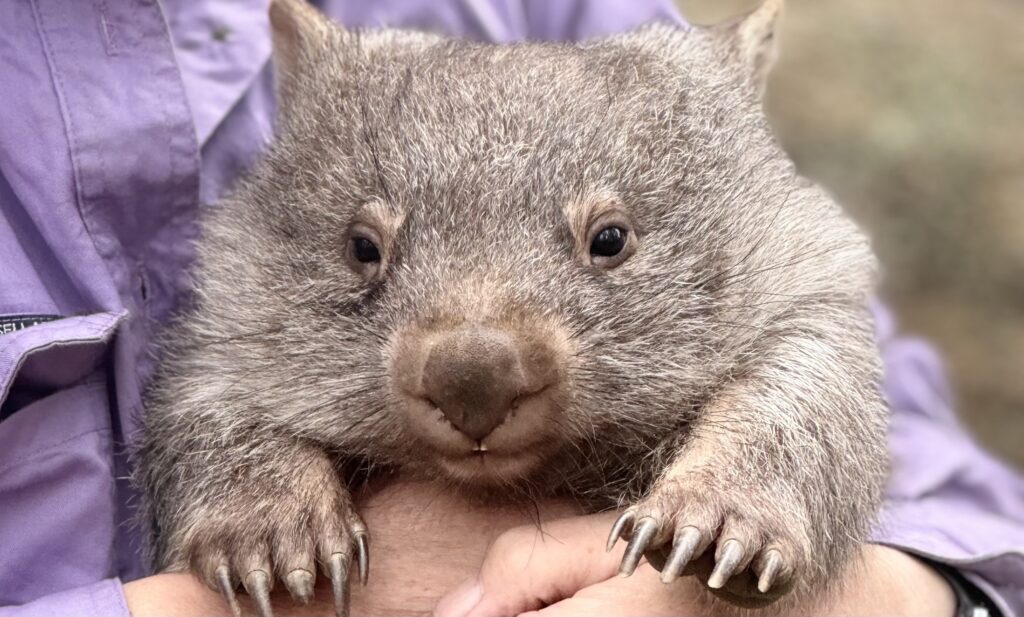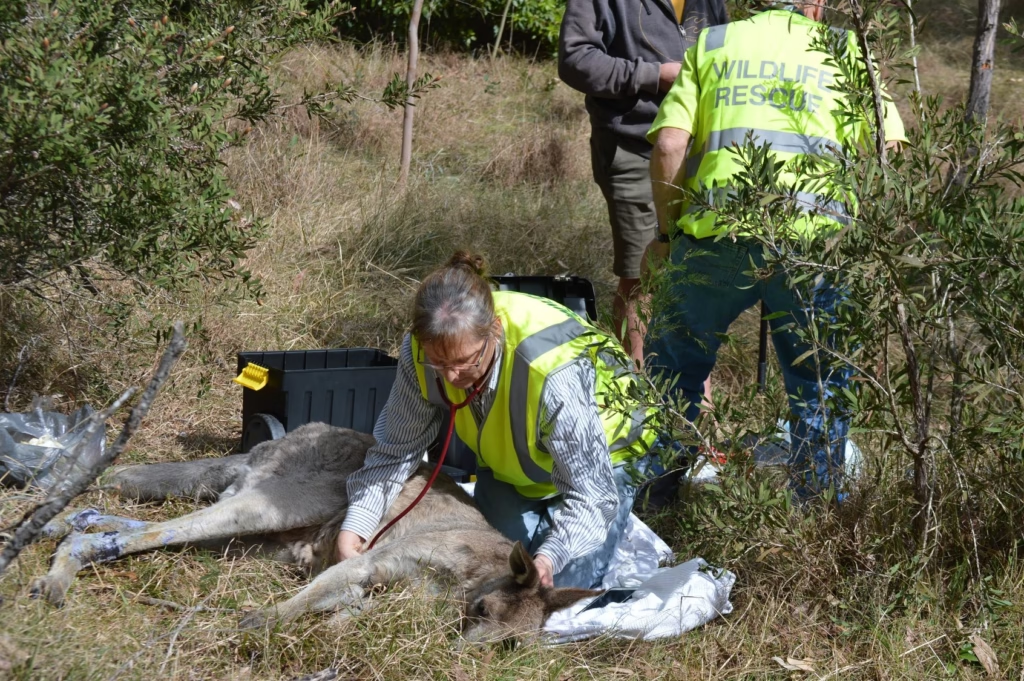
Rescues
Pouched joey rescues are common after motor vehicle collisions and for shooting victims. The joey can stay alive in the deceased mother’s pouch for many days before dehydration, exposure or predators kill them.
Kangaroo culls are surreal with bodies lying everywhere, an eerie feeling of emptiness and sadness. Many joeys still alive in the shot mother’s pouches and traumatised at foot joeys standing alone by their deceased mothers.
Searching for missing wombat joeys hiding in a burrow is a challenge. We use a modified toy truck with a camera and flexible extension rods pushed into the burrow while viewing a screen from the outside of the burrow.
Orphans
We raise orphans from furless joeys right through to release. Each species require a tailored pathway for a successful life as adults and be able to blend in with the local wild population. It can take up to two years for some species such as kangaroos and wombats. Macropods are raised with others of similar age and species and released as a mob. Wombats are often buddied up with one or two of similar age and soft released together.
Stress is always a major factor with orphaned wildlife and we believe they need to adjust slowly to all new stages. Wombats have access to underground tunnels, dirt and grasses early if healthy. Macropods have a system of larger and larger enclosures as they grow with access to huts and hanging pouches until they no longer use it. All animals have regular health checks including faecal microscopy and are treated promptly.
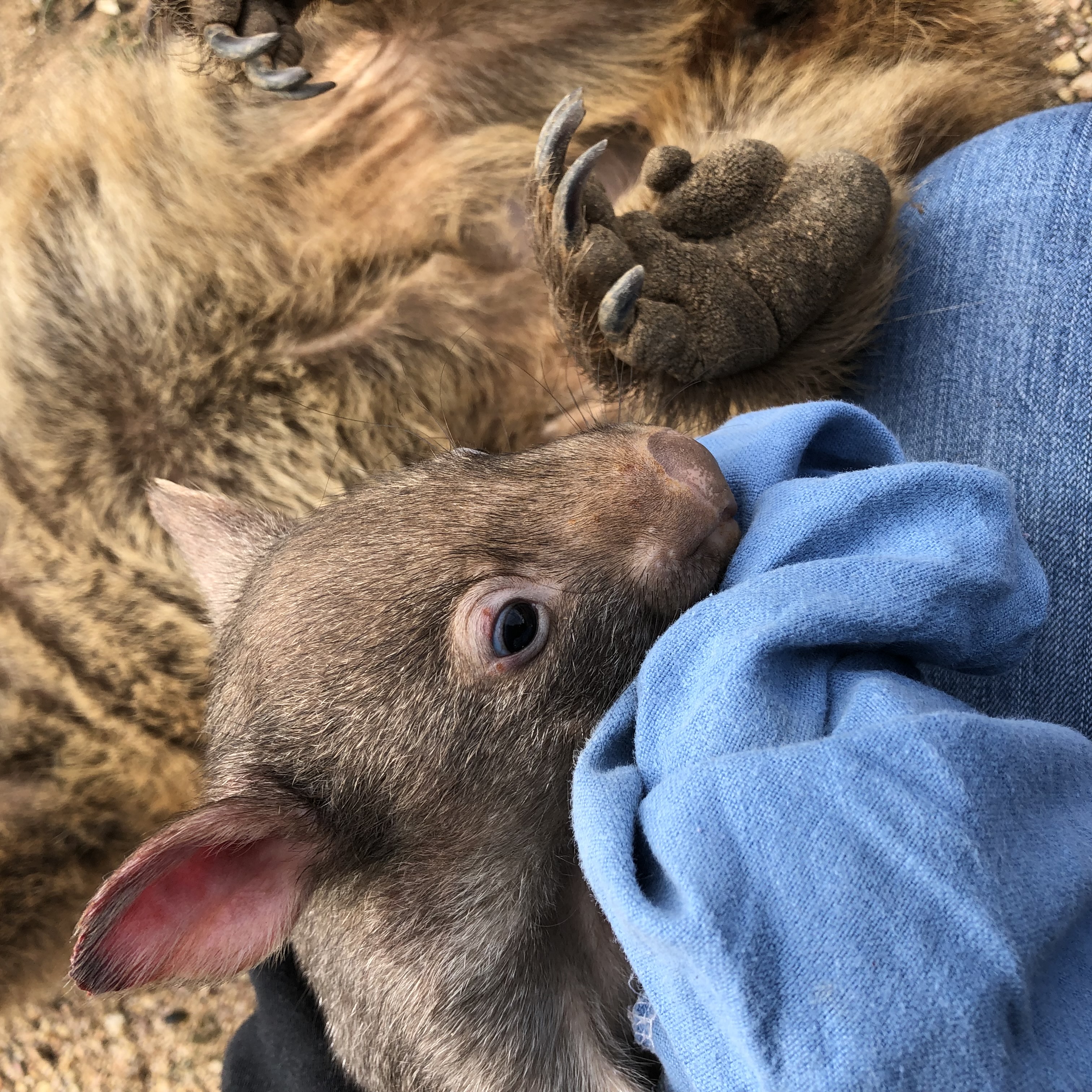
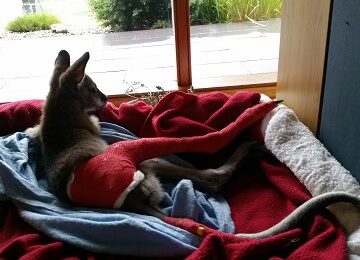
Injured
Many of the animals rescued have sustained injuries such as head trauma, fractured limbs, spinal injuries, dislocations, abrasions, bruises or other internal injuries. All animals rescued need to be thoroughly assessed and treatment addressed. For animals arriving at Jarake Wildlife Sanctuary that are injured beyond our level of skill and qualification or have injuries needing specialist and urgent attention then the services of a veterinarian are arranged.
Stress can be a silent killer and often untrained people keep orphans in good faith but unable to provide correct husbandry and diet leading to a disastrous outcome.
Release
At Jarake Wildlife Sanctuary, the animals have the advantage of being soft-released. Our enclosures allow for the adjustment to be “free” at a time frame that suits each individual without rushing them and always allowing them to return for as long as it is needed. We have a network of flaps and gates leading to different enclosures allowing “isolation”, “mixed” and “freedom” areas. The benefit of soft release and some making their home range close gives a possibility to continue monitor and able to help them if they sustain an injury or get sick later in their lives. After raising each orphan for up to 18 months, saying goodbye feels like an achievement. We do of course get very close to each individual animal but their time has come and our job is supposed to be done.
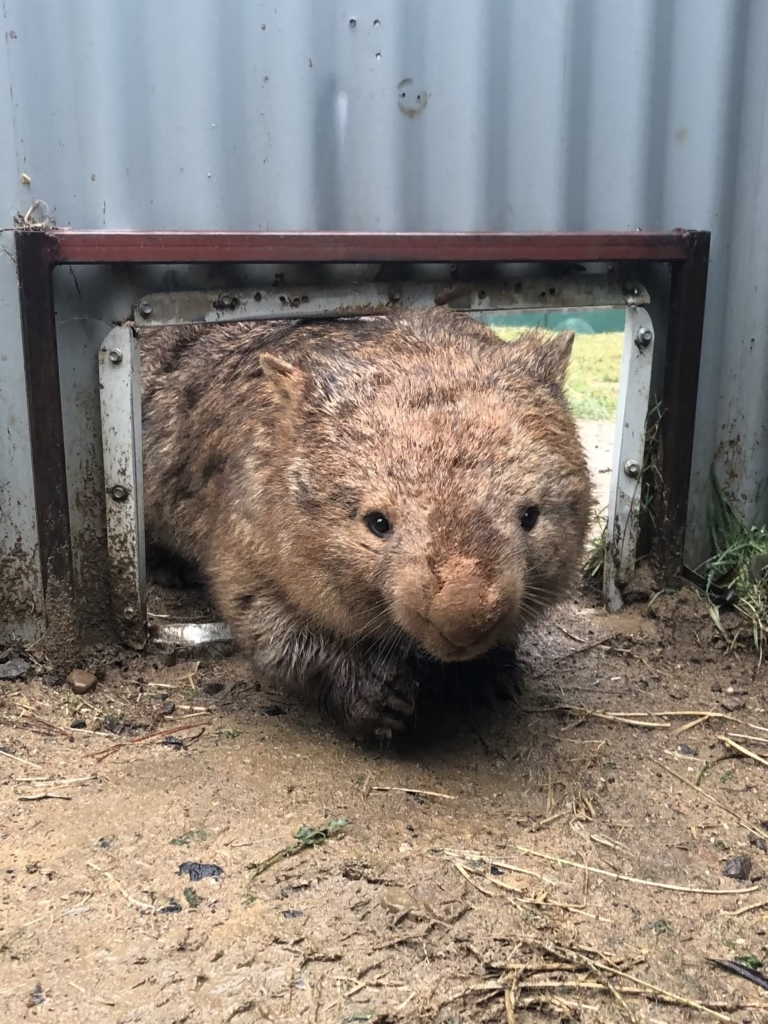
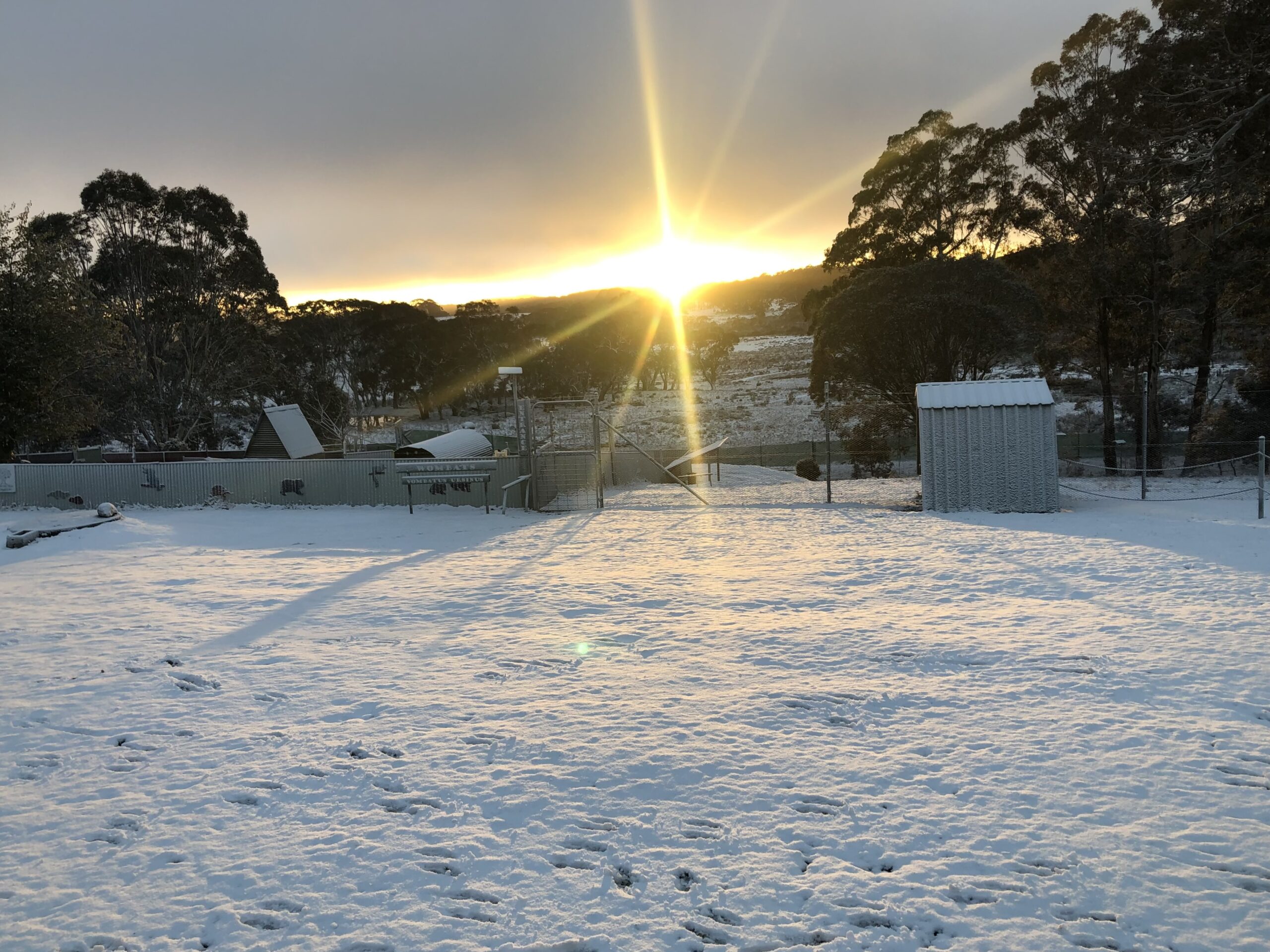
Facilities
We have over 3 acres purpose built wildlife enclosures monitored by CCTV security cameras. The enclosures contains natural habitat with large eucalyptus and natural water ponds. Many large old wombat burrows and many man made burrows and tunnels are all within and outside of the enclosures. We have access to the man made burrows and tunnels underground, allowing the progression for orphans to start small and move to the larger natural burrows as they grow. We have many huts and shelters for both the wombats, macropods and us during feeding time. We have isolation enclosures, first aid, treatment and education rooms as well as pathology facilities. A modified electric golf cart is used for mange treatment to cover more ground. A modified tonka truck with eight wheels, four on top and four under, and an infra red camera attached is sometimes used during rescues in search for orphaned wombat joeys hiding within their burrows. Raymond is also a licensed darter with work carried out under veterinary supervision.
Example of rescue: Jaw traps
Soft padded jaw traps are still legal and used extensively in State Forests by NSW Forestry Corporation, by DPIE and private property owners for pest management to target wild dogs and foxes. Wallabies, wombats and other native animals are regularly trapped causing death. This Swamp wallaby was caught in Glenbog State Forest over an Easter long weekend. The mother had a dislocated hip, spinal injuries, compound fracture to her foot where the trap had worn through exposing her fractured bone, and she was severely dehydrated, in excruciating pain and in shock. We still do not know how many days she was trapped. We provided pain relief, fluid t, cleaned and supported her fractured foot and consulted with a veterinarian. She died during the night before we could get her to the veterinary hospital. Her little joey also died as she was too small to survive outside of her mother’s pouch. We fought this case all the way to the parliament.
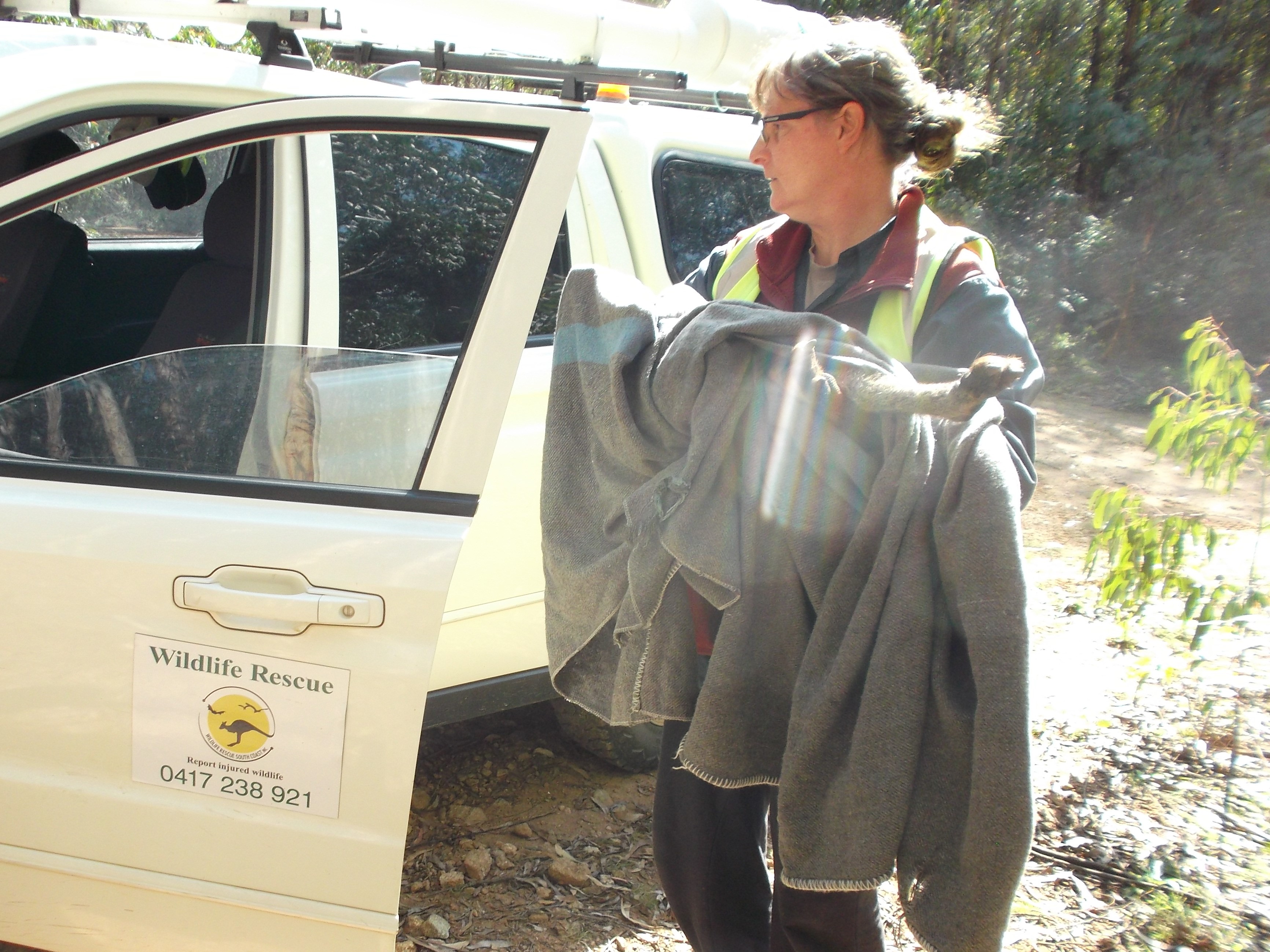
Thank you to Dr Mehreen Faruqi who questioned the Minister for Primary Industries, Minister for Regional Water, Minister for Trade and Industry in Parliament Legislative Council.
Home Legislative Council House Business Papers
1504 – PADDED JAW TRAPS
Faruqi, Mehreen to the Minister for Primary Industries, Minister for Regional Water, Minister for Trade and Industry
1. What regulations or rules are in place regarding the use of padded jaw traps in New South Wales?
2. Are organisations required to record information about animals caught, including unintended animals, by padded jaw traps and who keeps and monitors these records?
3. How often are padded jaw traps required to be checked and who monitors this?
4. If padded jaw traps are not monitored daily, are organisations required to include a lethal trap device or lethal toxin to limit animal suffering?
a. If not, why not?
5. Is there any regulation on the sale, either online or in person, of traps?
6. Can padded jaw traps be set on private property without the property owner’s permission?
7. Are the operators of padded jaw traps required to take injured wildlife to a veterinarian or contact a Wildlife Rescue Organisation for treatment?
a. Who monitors compliance with this?
8. When was the last scientific survey done on wild dog activity in the Glen bog region, where trapping is currently implemented?
a. What were the results of the latest survey?
Answer –
1. Padded jaw traps are permitted for use in NSW in accordance with best practice standards outlined in the national model Code of Practice for wild dog control and the relevant Standard Operating Procedure: DOG001: Trapping of wild dogs using padded-jaw traps.
2. Records associated with trapping performance are the responsibility of individual government agencies which undertake management.
3. In NSW, government trapping programs require at least daily checking of traps and it is up to individual management agencies to enforce this.
4. N⁄A
5. No
6. No
7. No. If an injured native animal is found in a trap, the animal is inspected for injury, open wounds are treated and the animal is released. If the animal is assessed as not being able to recover, the animal is appropriately euthanised.
8. Wild dog activity is studied collaboratively on a regional basis to collect data to inform Wild Dog Management Plans. These are coordinated on a regional basis by Local Land Services with the contribution of local public and private land managers including Forestry Corporation, the National Parks and Wildlife Service and local landholder representatives. Question asked on 3 May 2017 (session 56-1) and published in Questions & Answers Paper No. 103
Answer received on 7 June 2017 and printed in Questions & Answers Paper No. 114
Legislative Assembly https://www.parliament.nsw.gov.au/lc/papers/pages/qanda-tracking-details.aspx?pk=235534
